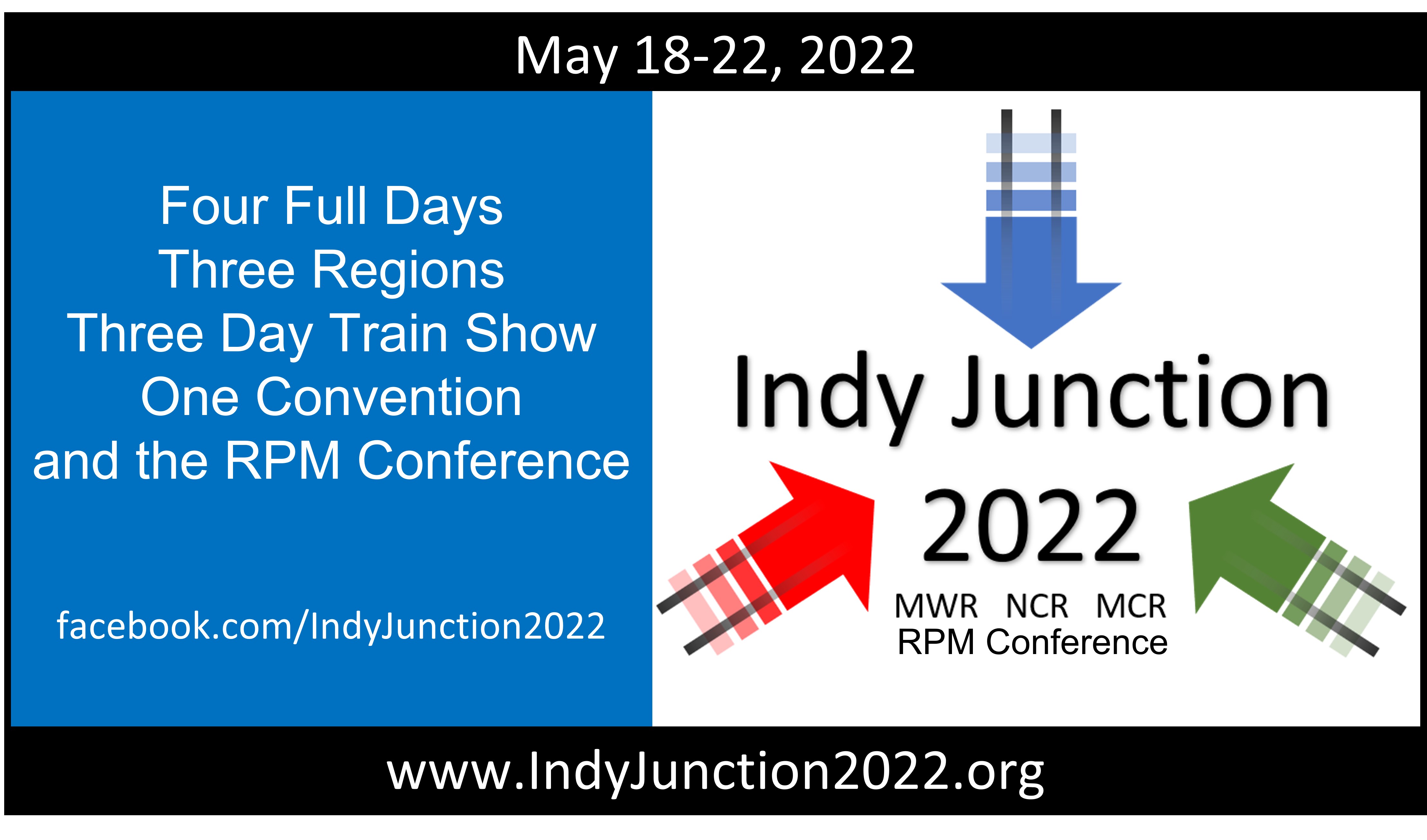Our mission is to promote education and fellowship through the sharing of information and the promotion of the world's greatest hobby. - Model Railroading.
From the Editor
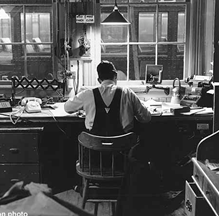
This month's feature is a technical article by Ray Huber which looks at a DIY track occupancy detector based on the 555 timer chip. Personally I like to dabble with circuits (I know enough to be dangerous and try very hard to not let the smoke out). Who else has a favorite circuit/electronic thing? We want to hear more about your DIY circuits! On that segue, we need content for the Train Order! Please tell us what circuits/electronics you like! Please submit your favorites at div1ncr@outlook.com.
Beyond circuits and electronics please tell us what you are up to at div1ncr@outlook.com!! Even if it's just a photo of your layout or something you saw or are trying for the first time. Sharing is the best way to spread the hobby and ideas.
View from the Cab
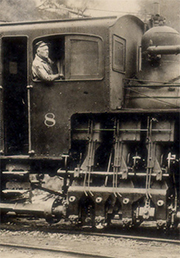 Model train shows are back on the agenda!!! With COVID numbers going back down, train shows appear to be on the rebound.
On February 2/19-2/20, we have the 52nd Annual Ann Arbor Train Show & Sale. On March 13
there is the Greater Toledo Toy & Train Show.
Model train shows are back on the agenda!!! With COVID numbers going back down, train shows appear to be on the rebound.
On February 2/19-2/20, we have the 52nd Annual Ann Arbor Train Show & Sale. On March 13
there is the Greater Toledo Toy & Train Show.
The BIG SHOW of the year will be the Tri-Regional Convention May 18-22 in Indianapolis IN. This show includes a three day train show!! Recent news from the NCR board indicates that registrations to the convention have been brisk and the numbers are already half way to the goal! What does this mean to you? If you have not registered, you better get on the ball and do it soon! The Modeling with the Masters clinics have already sold out but luckily an additional class has been added. This is FAIR WARNING, if you want to be included in any of the events (and get a room at the primary venue) you better register now!
I look forward to seeing everyone at the meeting!!
Marshall Stull,
mstull@marshallstull.com
Superintendent
Clinic Corner
February's clinic is going to be different than what we have previously mentioned during the last meeting. We had asked our fellow Divisions 6 and 8 (Metro Detroit) if they had anyone willing to head south this winter to help us out with clinics and we did get some response from them. Unfortunately plans don't always work out and this month's clinician had to cancel and next month's had to postpone his presentation. So, some last minute scrambling and begging (they actually graciously offered) and we have refilled the entertainment / education portion of our meetings.
Marshall will be presenting this month's clinic on Module and Layout Construction Techniques. He would like this to be more interactive than normal "sit and watch quietly" clinics. Please bring in photos or experiences of your own to share with the group. If anyone has some technique they've tried and did or didn't like, or commercially made benchwork let us all know how your experience was. As a novice to all aspects of model railroading I want to hear as much as possible of how everyone else has done things.
We hope to see you all February 25th!
Brian Burr,
Assistant Superintendent
February 25th Meeting Agenda
Here is a quick breakdown of what to expect at the meeting:
- Business - updates and latest happenings
- Rip Track Table - Have items you want to sell or just give away? Put them on the table
- Show and Tell - What is on your workbench?? Bring your latest project, photos, new purchase, tool, whatever!
- Clinic - Module and Layout Construction Techniques
My Favorite Detector
by Ray Huber, Division One - NCR
The following track occupancy detector is intended to be used with a digital command control (DCC) system. This detector uses an LM555 integrated circuit (IC) timer chip and a current flow sensing transformer. It is assumed that track wiring is done using the isolated block system. In other words, both rails at the beginning of, and the end of each block are gapped. A block can be as little as 1 to 2 feet or up to about 10 to 12 feet.
This detector works on the principal that current flowing between the power source (command station) and a current sensing transformer will cause a voltage change at the transformer. Current flow is via a power buss distribution system, a locomotive, lighted car/s, and drop wire's connected to the track rails. One of the drop wire's (red for this article) must loop through the current sensing transformer mounted on the circuit board (See Fig.4). This voltage change is sensed by the integrated circuit (IC) which changes the polarity of the circuit output causing a signal showing a green aspect (no occupancy) to change to a red aspect (occupancy).
Signals are normally installed to protect a train and crew from other rail traffic on the track ahead. In other words, to insure a clear track ahead! With today's emphases on operation with longer runs, hidden areas, and more trains moving at the same time, it would seem signals would have a place on many layouts. Even if your layout is small (home size), the addition of signals do have a place. If nothing else, they add a nice visual effect.
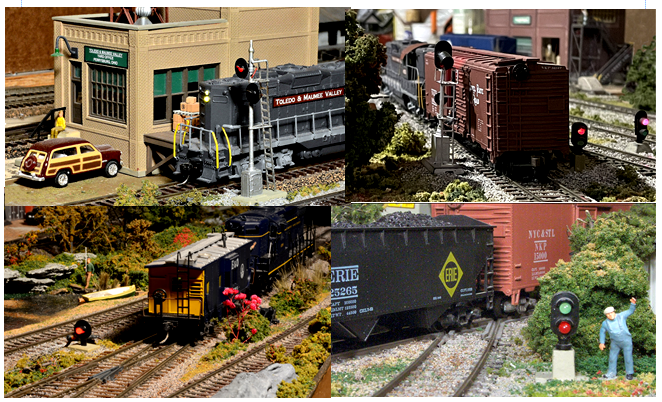
(On a personal note; I've assembled a number of these units and they work well.)
- This detector uses a current sensing transformer and a LM555 timer chip.
- When current flows from the supply source through a locomotive or car in an electrically isolated block (occupancy), then through a current sensing transformer, the voltage output to the detector is changed. This change is sensed by the LM555 timer chip changing the bi-polar output polarity from positive to negative at pin #3. Hence, the aspect of the signal head changes from green to red.
- This unit can be used to control one two lamp (LED) signal head, or two, two lamp (LED) signal heads.
- The unit can also control one or two signal heads using a single bi-color LED.
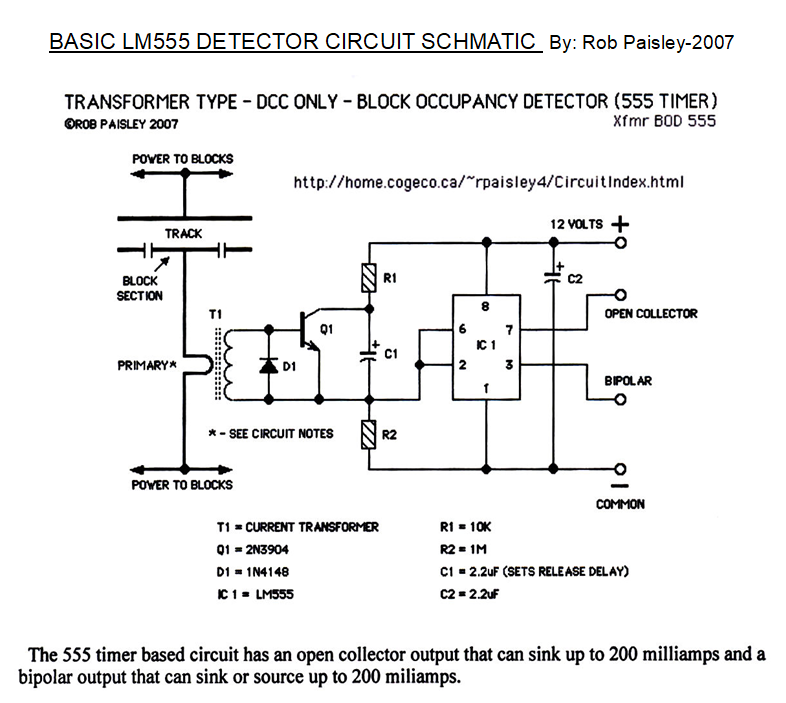
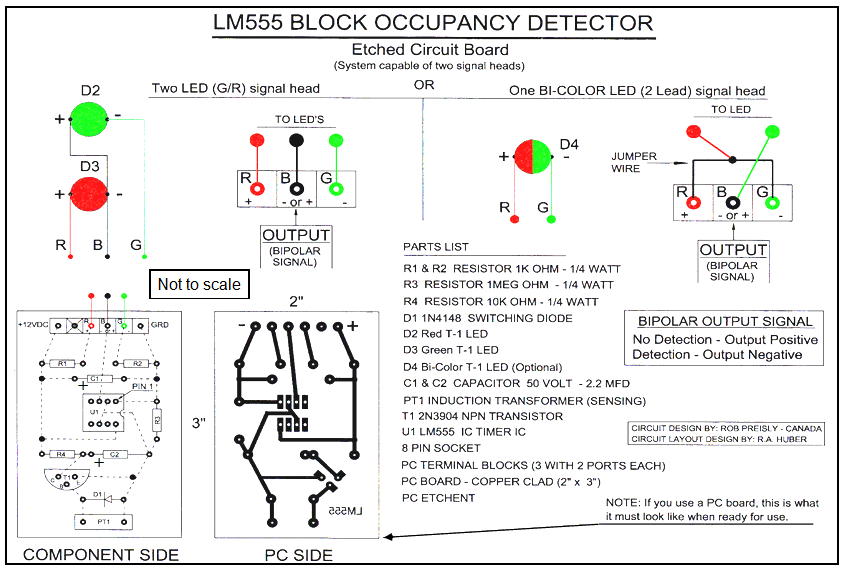
PC boards can be made using the Press & Peel method. You can obtain the necessary material from All Electronics or other similar supply houses.
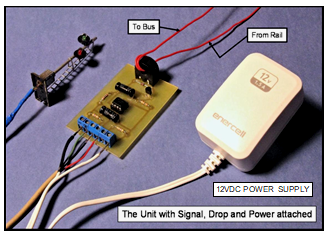
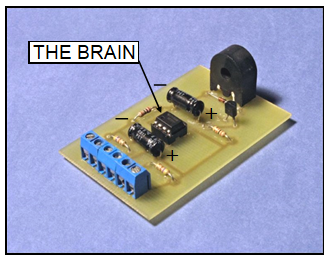
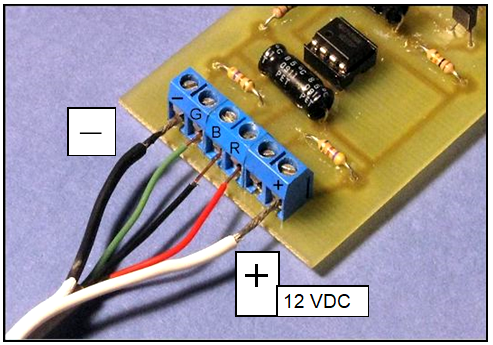
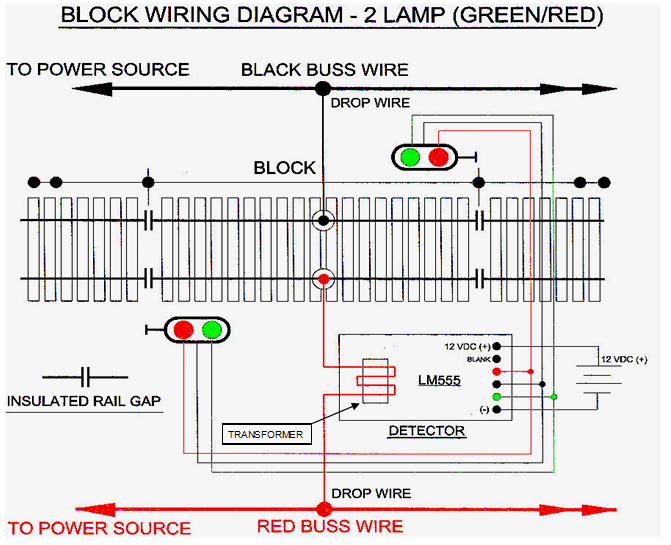
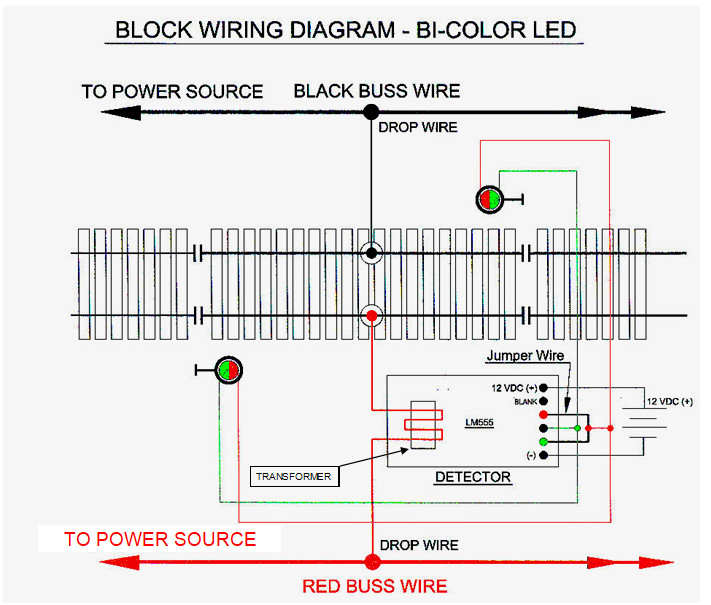
Just in case you are interested in trying to build your own, use this Art Work to make copies for etching.
If you do, the finished PC SIDE should look like the above image. In addition, pay attention to the wiring of the red and green LED's. It is critical that the polarity match is followed. Other wise they will not work! (See Fig.3).
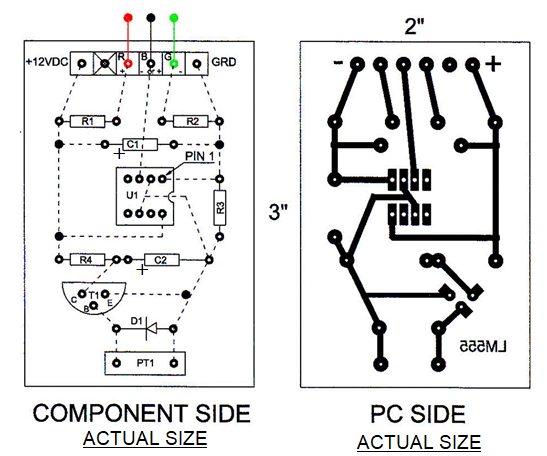
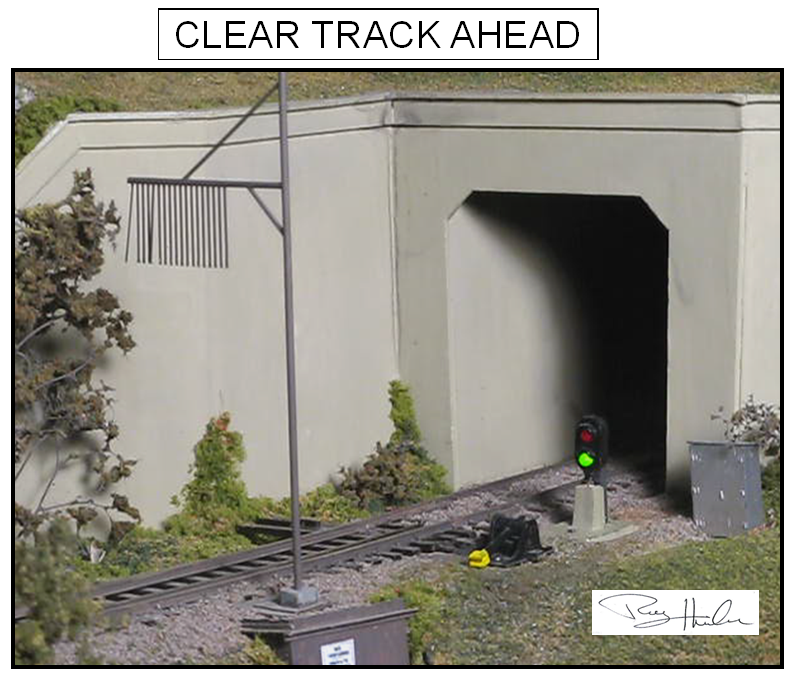
Division Happenings
Many of us were taking shelter during the early February snowstorm that hit our area! Railroads do not have the pleasure to shut down unless forced to and I am sure not to many people were out braving the elements when two Norfolk Southern freights at Fostoria had what looks like a little race on February 2, 2022. The Virtual Railfan camera caught the following action. Click the image for the full video!

 Train Order
Train Order